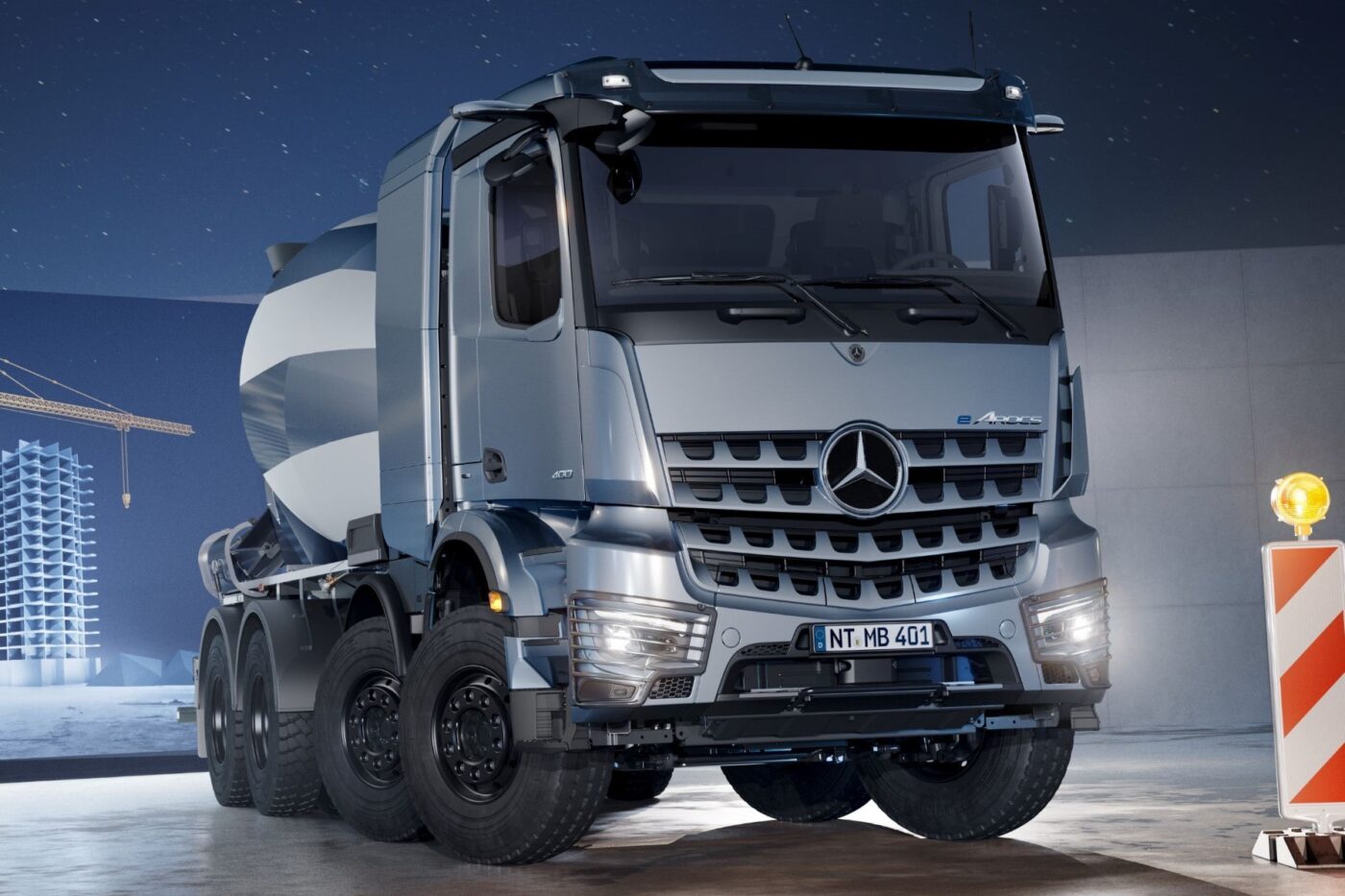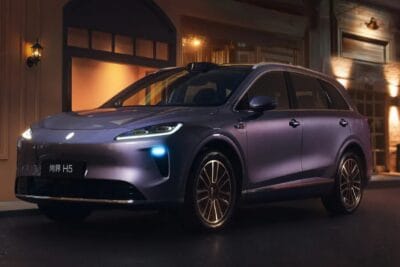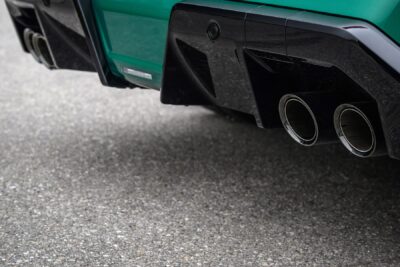European truck manufacturers want to weaken CO2 targets
This was reported by the Reuters news agency, which claims to have seen the letter from the manufacturers to the European Commission. According to the report, the letter is dated 13 October but has only now become public knowledge. In the document, the OEMs call for the CO2 standards for heavy commercial vehicles to be relaxed through a credit system. Their proposal would enable them to build up emission credits between the retained targets for 2025, 2030 and 2040, ultimately resulting in lower CO2 savings.
To put this into context: under current EU law, truck manufacturers must reduce emissions from new trucks by 15 per cent by 2025, 45 per cent by 2030 and 90 per cent by 2040 compared to 2019 levels. The current system not only incentivises manufacturers to fall short of these targets per se, but also requires them to fall below the linear progression between the target years. CO2 reduction must therefore take place gradually, year after year. And it is this second part that manufacturers want to overturn. They are therefore solely responsible for the gradual reduction in 2025, 2030 and 2040. They aim to utilise all additional CO2 savings that may be accumulated between 2025 and 2029, beyond the 15% target, as credits to mitigate the next 45% stage in 2030 and subsequent years.
Credits already exist today, but not in such a pronounced form. Manufacturers can or could collect them each year if they remain below the savings line drawn from 2019 to 2025 (from 100 to 85 per cent of CO2 fleet limits). They can use these credits to compensate in 2025 if the annual target is at risk. However, under current law, unused credits expire after 2025 and would have to be rebuilt for the next target period.
Christian Levin, CEO of Scania and Traton, described the letter, which has now become public, to Reuters as a ‘cry for help’. “We do not dispute that the targets themselves are correct. But it will be very, very difficult,‘ Levin, who is also chairman of the Commercial Vehicle Committee of the European Automobile Manufacturers’ Association (ACEA), is quoted as saying. ’The best thing would be to abolish these nonsensical penalties for the industry and instead encourage all parties involved in the system to take joint action through incentives or sanctions.”
A spokesperson for Daimler Truck also told the news agency that the industry had invested heavily in electrification but was facing ‘draconian’ penalties for failing to meet its targets – despite factors beyond its control, such as battery production and charging infrastructure.
Alexander Vlaskamp, CEO of MAN Truck & Bus, struck a similar note in a recent interview with elective: “Our industry has delivered: we have done our homework and developed very good products,” Vlaskamp said. “Unfortunately, implementing the promised framework conditions, for example, regarding charging infrastructure, is taking longer than perhaps expected. This is not in our hands. Yet we are supposed to bear the risk, keyword penalties.”
And just this week, we also spoke with Thomas Fabian, Chief Commercial Vehicles Officer at ACEA, in an interview about the current market situation. Fabian also emphasised: “But we’re far from that point, and time is short. If progress continues to lag, the entire value chain will feel the consequences, with manufacturers facing excessive penalties for factors beyond their control.” The wording used by the manufacturer representatives is strikingly similar.
But there are also other voices. Environmentalists in particular warn that watering down the targets could slow down the drive transition in Europe and pave the way for Chinese manufacturers. The environmental organisation Transport & Environment, for example, comments that the proposed changes could reduce sales of zero-emission trucks in the EU by 27 per cent by 2030.
Stef Cornelis, Head of T&E’s Freight and Fleet Management Division, warns: “Truckmakers want to give the impression that this is just about a small adjustment, but the opposite is true. It would mean a major rollback of Europe’s plans to decarbonise trucks and cut sales of electric trucks by almost a third in 2030. They are creating huge investment uncertainty for the charging infrastructure and power sector who need to start building grids and charging infrastructure today. The trucking industry claims that lack of charging infrastructure is the main bottleneck but how do they expect a power company to invest if they are now rolling back on their own commitments? The European Commission should hold the line. The more Europe and our truckmakers delay the transition, the more we risk losing the market to Chinese competitors.”
The German environmental NGO NABU also criticises the proposals as a step backwards for climate protection and the transport transition. In a statement sent to us by email, Merlin Jonack, transport policy officer at NABU Federal Association, said: “The demands for relaxation made by truck manufacturers are tantamount to a refusal to work. While investments are being made in charging infrastructure and grid connections throughout Europe, manufacturers are playing for time – and in doing so are jeopardising the very planning security that is necessary for the expansion of these framework conditions.” Those who act in this way are putting climate targets, market shares and jobs at risk. “We expect a constructive dialogue on how the planned increase in electric trucks in Europe can be achieved,” said Jonack.
According to Reuters, the European Commission did not respond immediately to a request for comment. However, Commission President Ursula von der Leyen is said to have recently promised commercial vehicle manufacturers concrete measures in a separate letter to EU heads of state and government “to help them achieve their goals.” Brussels is already poised to water down the CO2 emission targets for passenger cars by 2035 after pressure from industry and member states.
Commercial vehicle standards have remained unaffected – at least so far. According to a recent ICCT study, it is not so much the 2025 targets as the later targets that are the problem. The study’s authors recently analysed the progress made by European truck manufacturers in meeting the EU’s first CO2 reduction target for this year. The result: five of the seven major OEMs are likely to achieve the targets easily. However, this has less to do with electric trucks than with improved diesel engines.
While the EU only set its targets for 2030 and 2040 last year, the target for 2025 has been in place for some time. According to this target, emissions from heavy goods vehicles weighing 16 tonnes or more must be reduced by the aforementioned 15 per cent. Specifically, manufacturers must meet this target for the 2025 reporting period. It therefore applies to the truck fleet that will be registered for the first time between 1 July 2025 and 30 June 2026.
Manufacturers can achieve the CO2 fleet limits for 2025 with a mix of measures. Selling more zero-emission trucks (battery electric or hydrogen trucks) is only one way. The ICCT study authors emphasise that more efficient combustion engines are the main reason why most OEMs will have little trouble meeting the new hurdle.
Incidentally, the 2025 target is the first CO2-focused requirement that the European Union has ever imposed on manufacturers. In this respect, it is uncharted territory for all companies.
reuters.com, transportenvironment.org, info via email (NABU)
This article was first published by Cora Werwitzke for electrive’s German edition.





0 Comments